Own label is having its cake and eating it, but in the biscuit barrel brands are on top – with the upshot that biscuit sales are outgrowing those of cake. Samantha Lyster reports
The cakes market appears to have gone a bit stale.
Volume sales have slipped 0.6% over the past year, while value sales have only increased by 0.9% and most of that can be attributed to price rises [Kantar Worldpanel 52w/e 10 July]. Biscuits, on the other hand, seem to have kept their crunch, posting 0.8% volume growth despite the hefty price hikes behind the category's 6% value uplift.
It might come as a surprise that such superficially similar categories could experience such diverging fortunes but the operative word is 'superficially'. When it comes to the relative performances of own-label and branded players, the two categories couldn't be more different.
Value growth in the cakes market has been driven by own label, sales of which have risen 6% [SymphonyIRI 52w/e 9 July]. A greater focus on premium NPD has played a part, with this year's launches including Asda's flowerpot-shaped cake for Mother's Day and the £100 Christmas cake big enough to feed 50 soon to be gracing M&S shelves.
"Own label continues to dominate the cakes sector, with supermarkets investing in premium and more fashionable cake lines," confirms Mintel food & drink analyst Amy Lloyd. "More than half of consumers buy cakes on promotion and a fifth switch to own-label varieties."
This has not been good news for the branded players. Premier Foods' Mr Kipling has been particularly badly hit, with value sales falling 3.4% to £169.2m [SymphonyIRI]. Sales of Cadbury cakes, also produced by Premier Foods, have also slipped, by 0.5%.
The brands have not helped their cause by easing up on NPD. This has given consumers fewer reasons to visit the cake aisle, believes Gary Frank, CEO of Fabulous Bakin' Boys. "People don't want the same thing week in and week out. They want to be surprised, delighted and have value for money, too," he adds.
Frank says his brand is offering a different proposition to some of the bigger players, providing a greater variety of tastes and formats which has helped grow sales of the Fabulous Bakin' Boys brand by 12.9% to £19.1m [SymphonyIRI].
Some brands are bucking the trend by focusing their attention like some of the own-label players on the top end of the pricing spectrum. The growing popularity of home entertaining has given rise to an increase in premium brands, some of which are doing very well. Thorntons, which launched nine chilled cakes a year ago and has enjoyed 19.4% value growth over the past year, is one example.
"People are not going out as much, they are cooking more and entertaining at home and at the end of the meal they want a treat. We're an affordable luxury," says head of product marketing Matthew Smith, who believes more innovation and fun is needed in the market. "You don't want shoppers to buy cake and put it in the cupboard. You want them to be so excited they can't wait to have a slice."
The mid-market brands are not always hitting the spot in this regard. Premier admits some of its Mr Kipling lines have failed to excite consumers. Earlier this year, it conducted a range review and will launch a number of new products in the coming months. "We want to build connections with consumers," says Premier category controller for cake Diana Dorsett, adding that the company is hopeful sales will bounce back over the next 12 months.
Premier has put particular focus on snacking, launching Mr Kipling Angel and Lemon Slices in snack packs in May this year. "Our research shows 78% of consumers preferred this type of packaging," says Dorsett.
Another brand failing to grow its slice of the market is Soreen. Its sales have slumped 22.3% in value over the past year [SymphonyIRI], a symptom of the 18.6% slump in volumes in the overall malt loaf category [Kantar]. Soreen MD Paul Tripp puts the brand's performance down to a shift away from bogofs. "Although they drive short-term volume, bogofs are not an effective long-term strategy," he says.
Promotions are nevertheless becoming increasingly prevalent for both cakes and biscuits. Data from retail analysts Assosia indicates deals in featured space, such as gondola ends, were higher year-on-year across all of the big four. In Asda, for example, the number of deals increased almost 50%, from 1,356 to 2,026.
Further evidence of the pressure brands are under is shown by the average savings offered. With the exception of own label and Fabulous Bakin' Boys, the top 10 most-promoted brands all increased the depth of their deals in the past year.
In contrast to the cake market, the biscuit sector has grown 6% by value. This is not to say the market is thriving with volume growth of just 0.8% [Kantar], the increase in value can largely be attributed to rising retail prices. SymphonyIRI data shows growth in value sales for most of the UK's top 10 biscuit brands but only Fox's and Nestlé are in significant volume growth.
Their success can be attributed in part to NPD and marketing activity around products such as Fox's Ambers, marketed as an 'everyday indulgence'. This investment means branded biscuits have fared better than cakes and have left own-label biscuits trailing, the latter's 2.6% growth much slower than that of most top brands.
According to Kantar, one of the strongest sub-sectors has been seasonal biscuits, with value up 10% and volume up 8.2%. A big part of this success can be attributed to retailers putting seasonal biscuits on shelf earlier, maximising shoppers' exposure. "We are seeing Christmas tins and collections in stores in September," says a spokesman for the Food and Drink Federation. Halloween, too, is increasingly important, with retailers giving the occasion more and more presence.
However, eye-catching NPD has also played a part. "Biscuits are very adaptable and so producers can come up with more innovative products," says the FDF spokesman. "It is also a very expandable category, with room for major manufacturers and artisan producers."
Emma Goss-Custard, director of gluten-free biscuit and cake company Honeybuns, agrees the biscuit market is an exciting place for smaller producers. "In recent years there has been an explosion of interesting ingredients that can be bought in smaller quantities," she says. "It has opened up the market as you don't need to commit to huge quantities and can experiment."
New flavours are also helping drive growth in crackers and crispbreads, according to Mark Sugden, United Biscuits director of market strategy and planning. "If you look to the US, where savoury snacking is more advanced, you can see this category has plenty of growth in it," he says.
Some of the growth in crispbreads may be down to consumers migrating from healthier biscuits, which have slowed from 10.4% volume growth to 5.1% in the past year. Sugden attributes this to efforts by major players to reduce the fat and sugar content of everyday biscuits. Shoppers may see 'standard' biscuits as healthier than they were, he says, but stresses that his company's Go Ahead range is doing well.
Standard biscuits also tap into what research commissioned by Burton Foods identifies as growing interest in portion control as opposed to calorie counting, says David Costello, Burton's category and activation controller. "People are looking for taste," he says. "They want a treat, but will have it in a smaller amount."
The figures certainly seem to confirm the enduring appeal of treats, with value sales of indulgent biscuits up by 8.6%.
If cake brands can emulate biscuits and own-label cake offerings, for that matter with credible premium NPD supported by serious advertising spend, then they too may be able to have their cake and eat it.
Focus On Cakes & Biscuits
The cakes market appears to have gone a bit stale.
Volume sales have slipped 0.6% over the past year, while value sales have only increased by 0.9% and most of that can be attributed to price rises [Kantar Worldpanel 52w/e 10 July]. Biscuits, on the other hand, seem to have kept their crunch, posting 0.8% volume growth despite the hefty price hikes behind the category's 6% value uplift.
It might come as a surprise that such superficially similar categories could experience such diverging fortunes but the operative word is 'superficially'. When it comes to the relative performances of own-label and branded players, the two categories couldn't be more different.
Value growth in the cakes market has been driven by own label, sales of which have risen 6% [SymphonyIRI 52w/e 9 July]. A greater focus on premium NPD has played a part, with this year's launches including Asda's flowerpot-shaped cake for Mother's Day and the £100 Christmas cake big enough to feed 50 soon to be gracing M&S shelves.
"Own label continues to dominate the cakes sector, with supermarkets investing in premium and more fashionable cake lines," confirms Mintel food & drink analyst Amy Lloyd. "More than half of consumers buy cakes on promotion and a fifth switch to own-label varieties."
This has not been good news for the branded players. Premier Foods' Mr Kipling has been particularly badly hit, with value sales falling 3.4% to £169.2m [SymphonyIRI]. Sales of Cadbury cakes, also produced by Premier Foods, have also slipped, by 0.5%.
The brands have not helped their cause by easing up on NPD. This has given consumers fewer reasons to visit the cake aisle, believes Gary Frank, CEO of Fabulous Bakin' Boys. "People don't want the same thing week in and week out. They want to be surprised, delighted and have value for money, too," he adds.
Frank says his brand is offering a different proposition to some of the bigger players, providing a greater variety of tastes and formats which has helped grow sales of the Fabulous Bakin' Boys brand by 12.9% to £19.1m [SymphonyIRI].
Some brands are bucking the trend by focusing their attention like some of the own-label players on the top end of the pricing spectrum. The growing popularity of home entertaining has given rise to an increase in premium brands, some of which are doing very well. Thorntons, which launched nine chilled cakes a year ago and has enjoyed 19.4% value growth over the past year, is one example.
"People are not going out as much, they are cooking more and entertaining at home and at the end of the meal they want a treat. We're an affordable luxury," says head of product marketing Matthew Smith, who believes more innovation and fun is needed in the market. "You don't want shoppers to buy cake and put it in the cupboard. You want them to be so excited they can't wait to have a slice."
The mid-market brands are not always hitting the spot in this regard. Premier admits some of its Mr Kipling lines have failed to excite consumers. Earlier this year, it conducted a range review and will launch a number of new products in the coming months. "We want to build connections with consumers," says Premier category controller for cake Diana Dorsett, adding that the company is hopeful sales will bounce back over the next 12 months.
Premier has put particular focus on snacking, launching Mr Kipling Angel and Lemon Slices in snack packs in May this year. "Our research shows 78% of consumers preferred this type of packaging," says Dorsett.
Another brand failing to grow its slice of the market is Soreen. Its sales have slumped 22.3% in value over the past year [SymphonyIRI], a symptom of the 18.6% slump in volumes in the overall malt loaf category [Kantar]. Soreen MD Paul Tripp puts the brand's performance down to a shift away from bogofs. "Although they drive short-term volume, bogofs are not an effective long-term strategy," he says.
Promotions are nevertheless becoming increasingly prevalent for both cakes and biscuits. Data from retail analysts Assosia indicates deals in featured space, such as gondola ends, were higher year-on-year across all of the big four. In Asda, for example, the number of deals increased almost 50%, from 1,356 to 2,026.
Further evidence of the pressure brands are under is shown by the average savings offered. With the exception of own label and Fabulous Bakin' Boys, the top 10 most-promoted brands all increased the depth of their deals in the past year.
In contrast to the cake market, the biscuit sector has grown 6% by value. This is not to say the market is thriving with volume growth of just 0.8% [Kantar], the increase in value can largely be attributed to rising retail prices. SymphonyIRI data shows growth in value sales for most of the UK's top 10 biscuit brands but only Fox's and Nestlé are in significant volume growth.
Their success can be attributed in part to NPD and marketing activity around products such as Fox's Ambers, marketed as an 'everyday indulgence'. This investment means branded biscuits have fared better than cakes and have left own-label biscuits trailing, the latter's 2.6% growth much slower than that of most top brands.
According to Kantar, one of the strongest sub-sectors has been seasonal biscuits, with value up 10% and volume up 8.2%. A big part of this success can be attributed to retailers putting seasonal biscuits on shelf earlier, maximising shoppers' exposure. "We are seeing Christmas tins and collections in stores in September," says a spokesman for the Food and Drink Federation. Halloween, too, is increasingly important, with retailers giving the occasion more and more presence.
However, eye-catching NPD has also played a part. "Biscuits are very adaptable and so producers can come up with more innovative products," says the FDF spokesman. "It is also a very expandable category, with room for major manufacturers and artisan producers."
Emma Goss-Custard, director of gluten-free biscuit and cake company Honeybuns, agrees the biscuit market is an exciting place for smaller producers. "In recent years there has been an explosion of interesting ingredients that can be bought in smaller quantities," she says. "It has opened up the market as you don't need to commit to huge quantities and can experiment."
New flavours are also helping drive growth in crackers and crispbreads, according to Mark Sugden, United Biscuits director of market strategy and planning. "If you look to the US, where savoury snacking is more advanced, you can see this category has plenty of growth in it," he says.
Some of the growth in crispbreads may be down to consumers migrating from healthier biscuits, which have slowed from 10.4% volume growth to 5.1% in the past year. Sugden attributes this to efforts by major players to reduce the fat and sugar content of everyday biscuits. Shoppers may see 'standard' biscuits as healthier than they were, he says, but stresses that his company's Go Ahead range is doing well.
Standard biscuits also tap into what research commissioned by Burton Foods identifies as growing interest in portion control as opposed to calorie counting, says David Costello, Burton's category and activation controller. "People are looking for taste," he says. "They want a treat, but will have it in a smaller amount."
The figures certainly seem to confirm the enduring appeal of treats, with value sales of indulgent biscuits up by 8.6%.
If cake brands can emulate biscuits and own-label cake offerings, for that matter with credible premium NPD supported by serious advertising spend, then they too may be able to have their cake and eat it.
Focus On Cakes & Biscuits

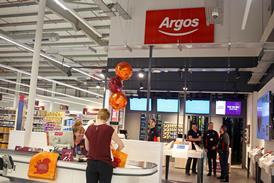


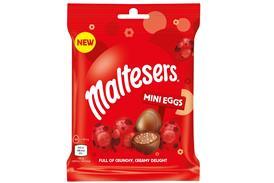
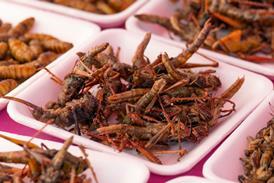
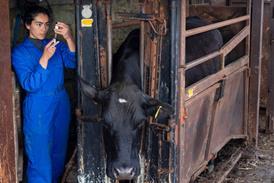
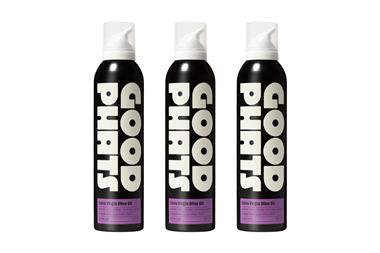

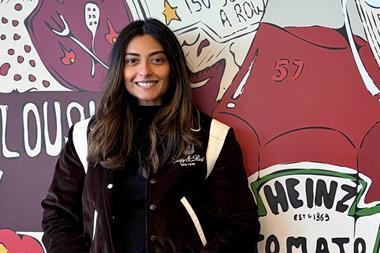
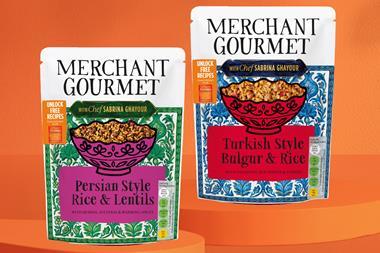


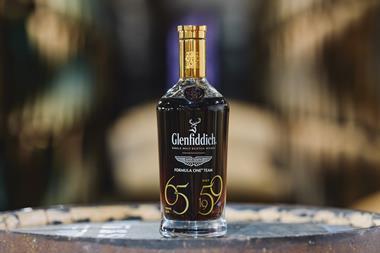



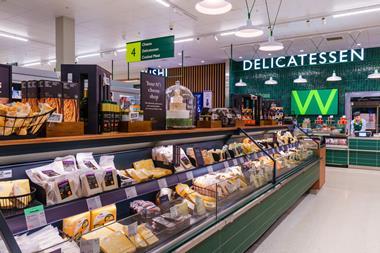

No comments yet